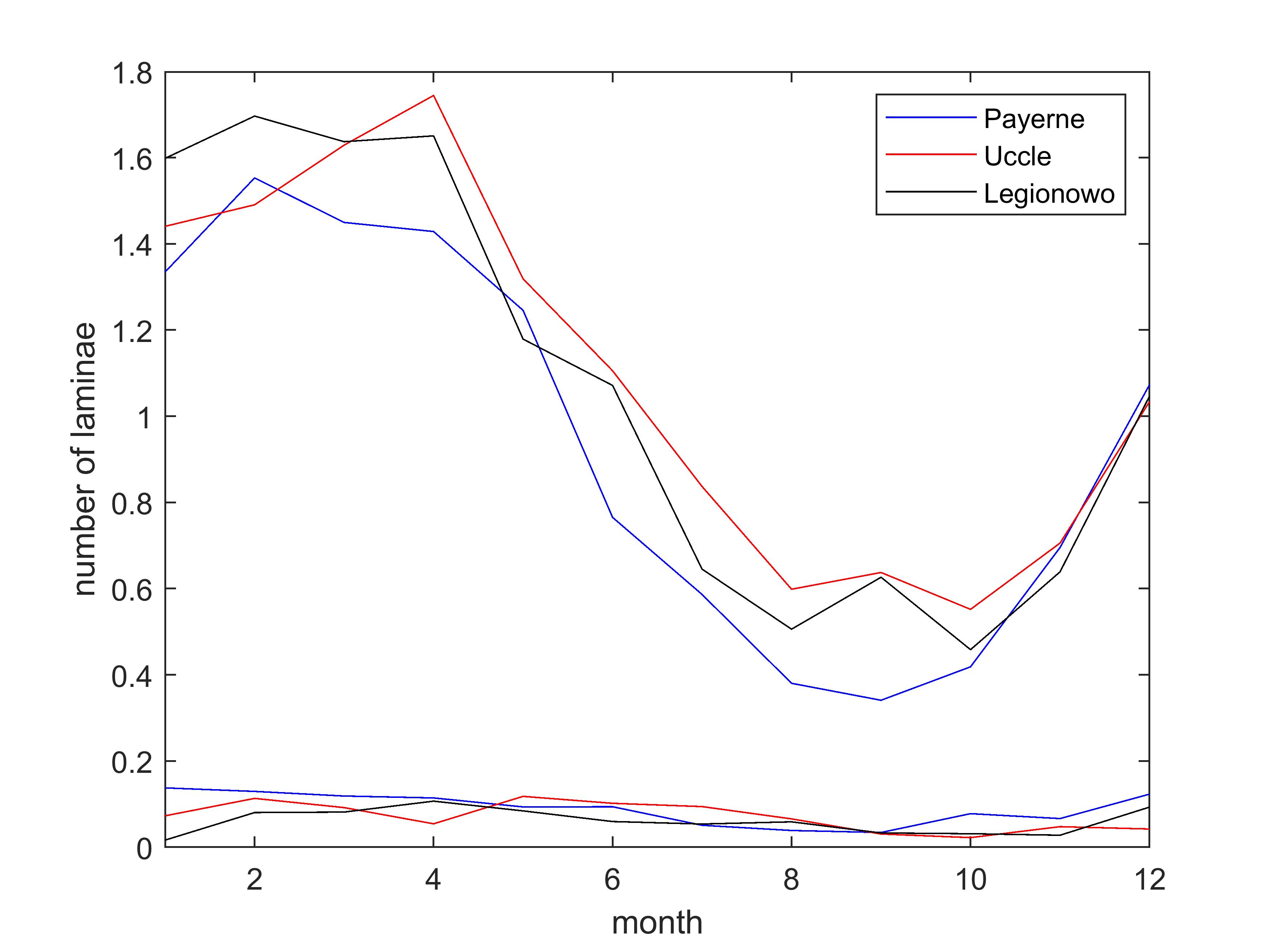Ozone
We are doing ozone research in our institute for more than 20 years. First we dealt with impact of geomagnetic storms on ozone, then with the long-term trend of the ozone laminae in the vertical profile of ozone. We found a change in trends of lamina number in the mid- 1990s. Before this point the negative trend is present, while after this point the positive one or no trend occurs. This trend change is connected with the changes in the ozone concentration in the atmosphere and with the dynamics of the stratospheric polar vortex.
We have finished the procedure which distinguishes effects of the planetary and gravity waves in the vertical ozone profile. The characteristics of planetary and gravity waves are different but these characteristics are similar at stations in the European midlatitudes. The yearly course of laminae induced by planetary waves is sharp while the one induced by the gravity waves is weak (figure). Large ozone laminae are generated predominantly by the planetary waves, while the medium and small laminae are also induced by gravity waves.
In the future we plan to compare trends of ozone concentration at layers above 500 hPa among various reanalyses like MERRA 2 and ERA5 according to their extremity. At first wemust detect inhomogenities, because they influence the values of ozone trends.

Figure: The annual variation of the lamina number per ozone profile for laminae induced by planetary waves (group of lines with the strong variation) and for the ones induced by gravitational waves (group of lines with the weak variation) at the European ozonosonde stations.
Stratospheric dynamics
This area of research was opened in late 2007 due to a Czech-German project on this topic. We are focused mainly on the observational and reanalyses datasets, which could be used for our analyses. Analysis of stratospheric winds at 100 and 10 hPa at northern higher middle latitudes revealed clearly poor quality of ERA-40 winds in the last four winters of ERA-40 data series; some disagreement between ERA-Interim and NCAP/NCAR reanalyses was found before but not after 2003. We extended investigations partly into the mesosphere. Long-term changes of stratospheric and mesospheric yearly average winds seem to be similar. Winter 100 hPa winds in the Atlantic sector display long-term changes very similar to those of NAO (North Atlantic Oscillation in the troposphere). Some influence of solar activity on long-term changes of stratospheric winds was detected as well. Our results show that temperature and winds trends in the last five decades are influenced by the total ozone trends; when the latter changed in the mid-1990s, trends in temperature and winds also changed (even their sign). The SPW1 in geopotential heights and related two-cell structure in meridional wind covers the middle stratosphere (lower boundary ~50 hPa), upper stratosphere and most of the mesosphere (almost up to about 0.01 hPa). The two-cell longitudinal structure in meridional wind is a relatively persistent feature; only 9 out of 35 winters (Januaries) display more complex structure due to different SPW filtering by the zonal wind pattern.
